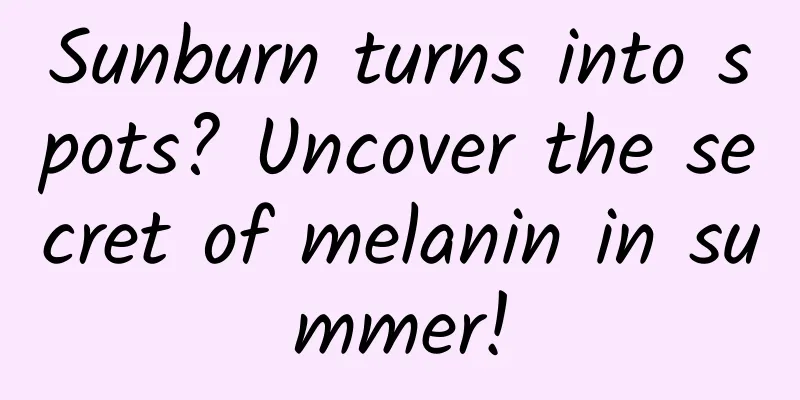The efficacy and function of dried Rehmannia root

|
The medical value of dried Rehmannia root is beyond our imagination. It is very effective in treating some diseases. Dried Rehmannia contains many substances that are beneficial to the human body. Let’s take a look. [Other names] Earth marrow (Ben Jing), original land (Bencao Zhengyi), dried raw land (Zhongyao Zhi). [Source] It is the rhizome of Rehmannia glutinosa, a plant of the Scrophulariaceae family . Dig up the rhizomes between October and November, remove the stems, leaves and fibrous roots, and wash off the soil to get fresh Rehmannia. Dried Rehmannia root (without washing) is placed directly on the baking bed and slowly baked, turning it over frequently until the inside gradually dries up and turns black in color, the whole body becomes soft, and the outer skin becomes hard. Then it can be taken out. Sun drying method can also be used. [Original form] Rehmannia glutinosa, also known as: benzyl (Erya), Rehmannia glutinosa (Bielu), milk seed (Bencao Yanyi), mother-in-law's milk (Jiuhuang Bencao), dog's milk (Illustrated Catalogue of Plant Names and Realities), mountain tobacco, mountain cabbage, wine pot flower, sweet wine tree, honey pot tree. [Habitat distribution] Mainly cultivated, but also grows wild on hillsides and roadside wastelands. It is distributed in Henan, Zhejiang, Jiangsu, Anhui, Shandong, Hebei, Liaoning, Shanxi, Shaanxi, Inner Mongolia, Hunan, Hubei, Sichuan and other places. It is mainly produced in Henan and Zhejiang. It is also produced in Hebei, Shaanxi, Gansu, Hunan, Hubei, Sichuan, Shanxi and other places. The ones produced in Henan are the most famous. [Properties] Irregular round or oblong blocks, 6 to 12 cm long and 3 to 6 cm in diameter. The surface is gray-brown or gray-black, wrinkled and uneven, with irregular horizontal lines. The small ones are mostly long and strip-shaped, slightly flat and twisted. The texture is soft, but becomes firm and heavy after drying. It is not easy to break, the cross section is smooth, purple-black or jet-black and shiny, appears oily and sticky. It has a slight fragrance and a slightly sweet taste. The best ones are those that are plump, heavy, and have a black and oily cross-section. [Preparation] Dried Rehmannia root: soak in water for a while, wash off mud, sand and impurities, take out and stew until moist, slice and dry in the sun or in an oven. Raw Rehmannia charcoal: Take the washed dried Rehmannia, put it in a calcining pot and fill it 80% full, cover it with another pot, seal the joints between the two pots with yellow mud, press heavy objects on top, and calcine it with a gentle and strong fire until the white paper stuck on the bottom of the lid turns brown, block the fire door, wait for it to cool, and then take it out; or you can put the dried Rehmannia in the pot and directly fry it into charcoal. 【Nature and flavor】 Sweet, bitter, cool. [entry into meridians] Enters the heart, liver, and kidney meridians. 【Functions and indications】Nourishes yin and blood. It is used to treat fever due to yin deficiency, thirst, vomiting blood, epistaxis, metrorrhagia, irregular menstruation, fetal movement disorder, and constipation due to yin damage. [Usage and Dosage] For oral use: decocted in water, 3-5 qian, large dose 1-2 liang; made into paste or made into pills or powder. For external use: mash and apply. [Note] Use with caution if you have spleen deficiency, diarrhea, stomach deficiency, poor appetite, or excessive phlegm in the chest. [Additional prescription] ① For treating diabetes: 3 liang each of Astragalus, Poria, Trichosanthes root, Licorice, and Ophiopogon japonicus, and 5 liang of dried Rehmannia root. Chop the above six ingredients into small pieces, add eight liters of water, boil and reduce to two and a half liters, remove the residue and divide into three doses, one dose per day, ten doses for total. (Qianjin Fang) 【Clinical application】 ①Treatment of rheumatism and rheumatoid arthritis [Remarks] The one cultivated in Henan is called Huaiqing Rehmannia, and its main characteristics are that the plant is relatively large; the rhizome is relatively large and block-shaped, cylindrical or spindle-shaped; the flowers are not densely distributed at the top of the stem, but form sparse racemes. 【Excerpt】 《*Dictionary》 [Source] From "Shennong's Herbal Classic". I believe that the above introduction to the knowledge about dried Rehmannia root will give you a better understanding of it. We can eat dried Rehmannia glutinosa in our daily life to regulate and improve our body. |
<<: The efficacy and function of dried winter vegetables
>>: Effects and functions of Alnus jiangnanensis
Recommend
What are the effects of mountain twist
The mountain twister is more common in Guangdong,...
Tonga volcano erupts, but the spewing of hot magma could cause global temperatures to drop?
Recently, the Hunga Tonga volcano (20.5°S, 175.4°...
The efficacy and function of neem flowers
Neem flower is a very common Chinese medicine in ...
The efficacy and function of lentil skin
Lentil husk is a commonly used medicinal material...
The efficacy and function of Chongtian fruit
Many people choose Chongtian Fruit because of its...
The efficacy and eating methods of Panax notoginseng
Many people like to use some Chinese medicinal ma...
Do you want to soak lily?
Patients with rhinitis should never smell lilies,...
The efficacy and function of dense russula
Traditional Chinese medicine often has unexpected...
Will people really turn gray overnight when under great pressure or blow?
Many of you have heard of the story of "Wu Z...
Which type of yam has the most nutritional value?
Yam is a common food ingredient in our daily life...
The efficacy and function of Erigeron lanceolata
Have you ever eaten Erigeron chinense? It is a nu...
Acne broke out on my face after taking Chinese medicine
Chinese medicines are divided into traditional Ch...
The efficacy and function of Pteris pubescens
Traditional Chinese medicine is very effective in...









